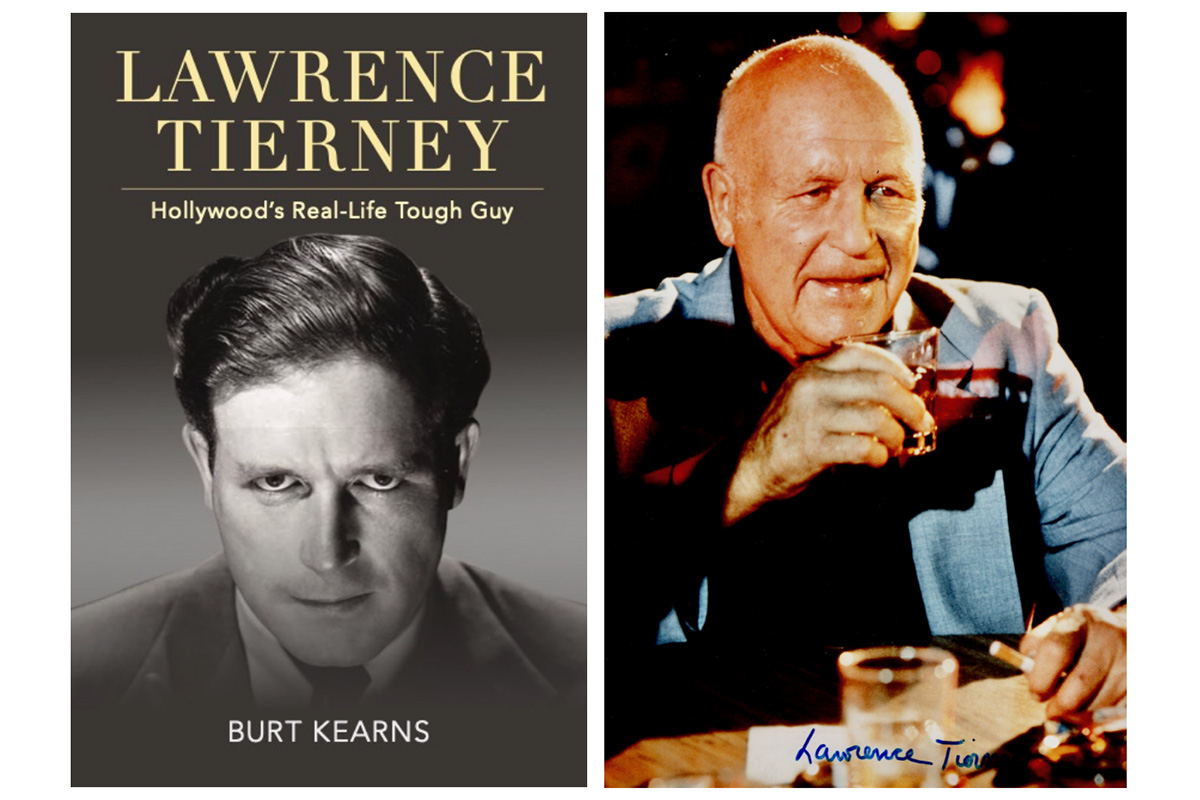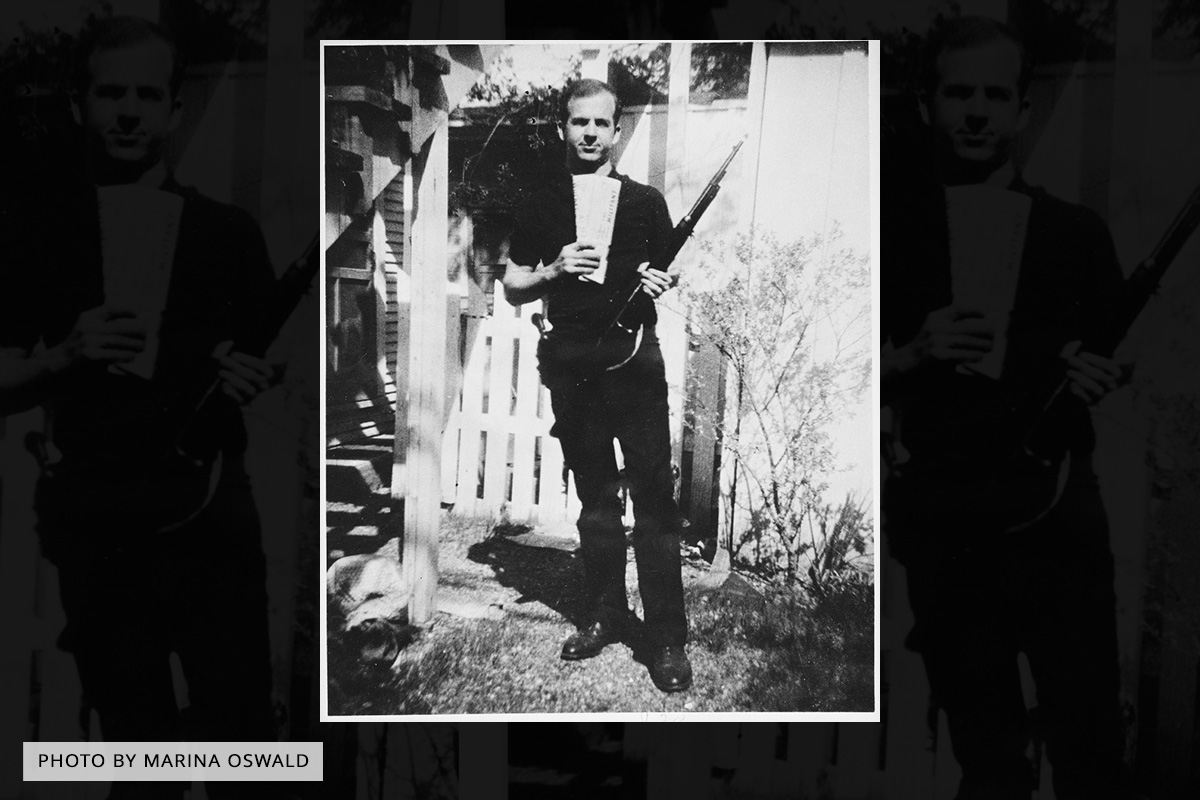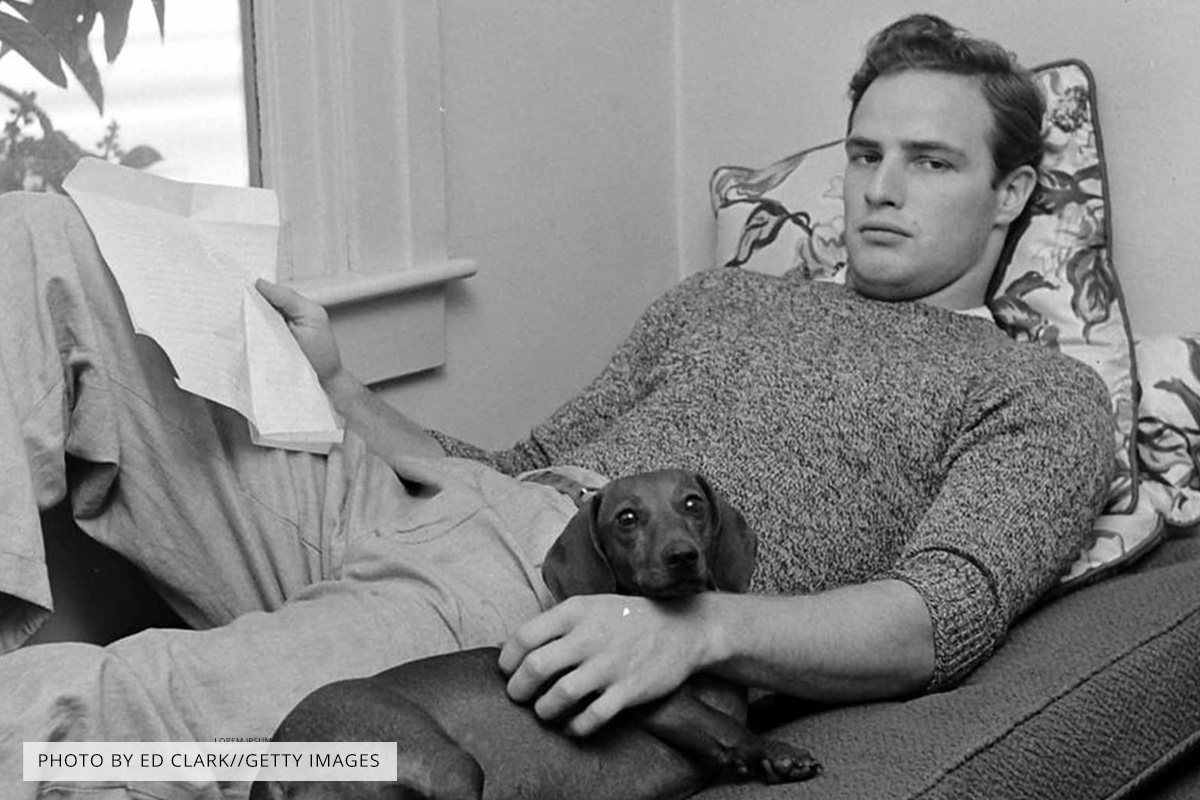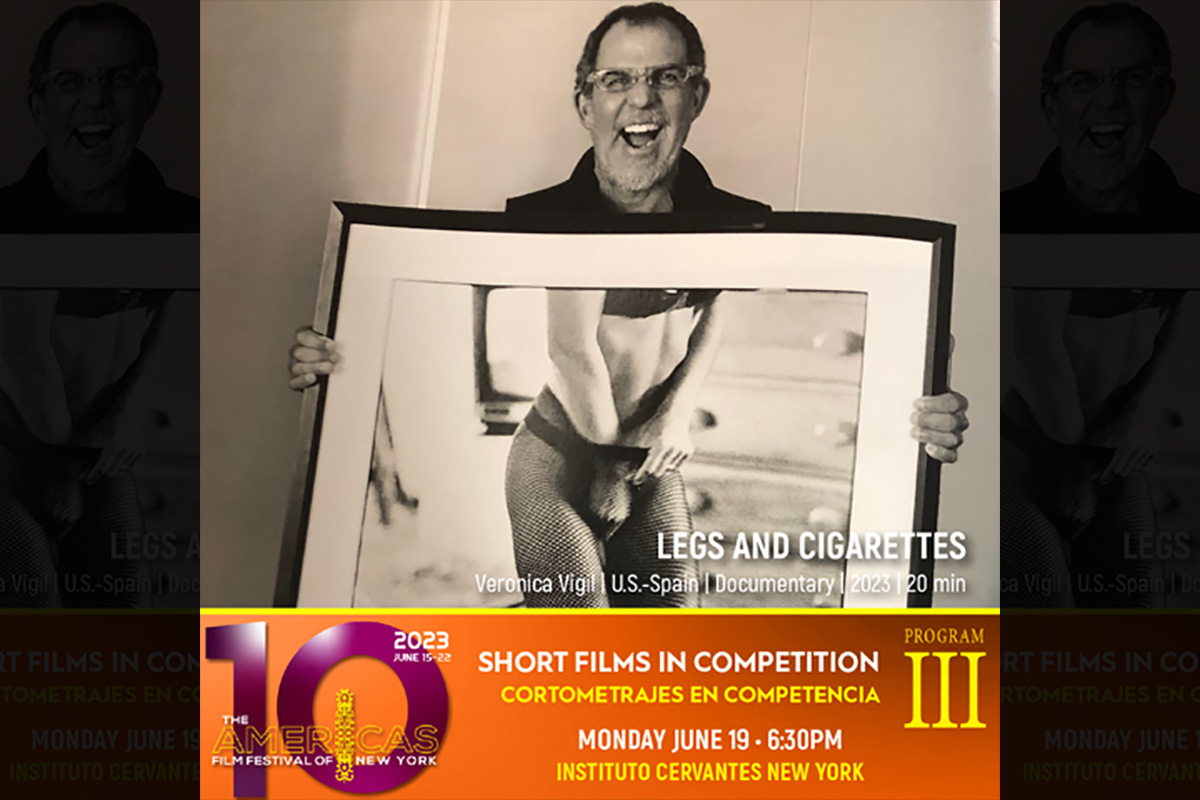©2022 By Burt Kearns
Exclusive to Legsville.com
The first biography of the legendary and notorious actor Lawrence Tierney was published on Tuesday, December 6, by the University Press of Kentucky. Lawrence Tierney: Hollywood’s Real-Life Tough Guy, by Legsville contributor Burt Kearns, traces Tierney’s career from his overnight success in the 1945 film Dillinger, through the drunken scenes, brawls, and arrests that derailed his career, to his “rediscovery” by Quentin Tarantino in Reservoir Dogs. In this exclusive excerpt, it is 1985, when we find Tierney returning to Hollywood after the death of his brother, the actor Scott Brady, who early in his career had changed his name from Gerard Tierney… for obvious reasons.
From Lawrence Tierney: Hollywood’s Real-Life Tough Guy
Renaissance Man
After Lawrence Tierney zipped up and made his way home from his brother’s funeral, he walked into a refreshed career. At sixty-six, his presence in a film or television episode added a dimension of menace, authority, sly humor—or a mixture of the three. Audiences might not place the face, but producers and writers knew his unique place in Hollywood history and often hired him because of it. Thanks to a video rental market that had expanded greatly in the past half decade, Tierney was also appreciated by a new generation of cinephiles educated on VHS tapes of vintage films they could study, over and over again. One of the most intense “students,” a twenty-two-year-old movie obsessive, was hired in 1985 as a clerk at the Video Archives store in Manhattan Beach, California. Quentin Tarantino would spend the next five years there, watching movies, taking notes, and writing scripts.
Tierney was no longer considered a frightening, incorrigible menace to Hollywood society, but an entertaining if unpredictable relic of a more genuine age. He settled into a small apartment in Hollywood and began befriending many movie fans much younger than himself. It was a natural connection. While many of his contemporaries had died or long been domesticated, he continued to frequent the Hollywood dive bars and taverns that were now patronized by young people as well as old drunks.
It was this group of relative youngsters—filmmakers, writers, movie fans, scenesters, and others in his path—that in this late stage of Tierney’s career would take the place of the gossips and newspaper columnists of old. They would chronicle and spread word of his exploits and outrages in person, in print, and years later, through social media.
“Larry knew he could get away with murder with people who respected his film career. And he did,” film historian David Del Valle observes. “People that have lived rough, that literally have stripped themselves of all pretension, become very manipulative, because being on the street you get to read people instantly. You know exactly where you can go with whatever it is you’re trying to do. And Larry was that. Larry got away with murder because he was a movie actor.”
“He was such an outsized personality, a truly unique person, and he was the first person I met who had a connection to old Hollywood,” recalls Todd Mecklem, who was in his mid-twenties when he became friends with Tierney. “And the dichotomy of this big, powerful guy with the sweetness, but then the edge—it was kind of exciting. He took a liking to me, and once he liked you, you were part of the club, you were his pal.”
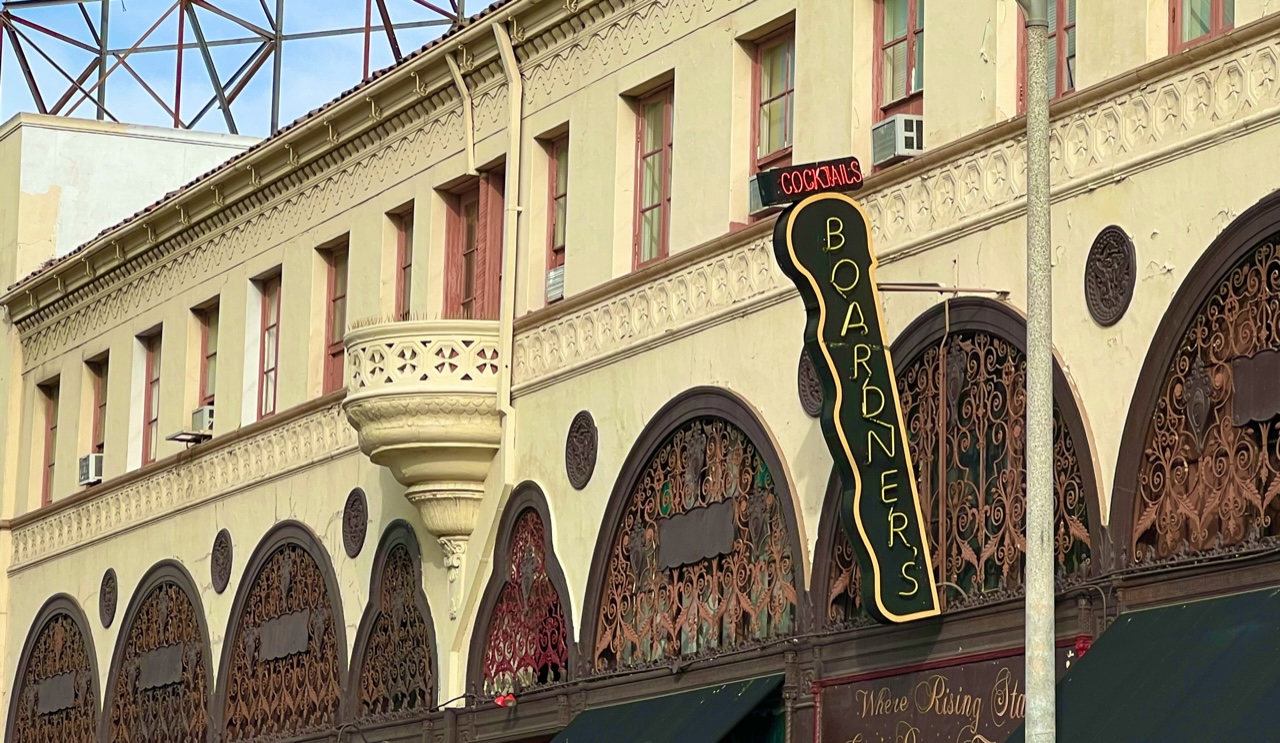
C. Courtney Joyner, the screenwriter and director, was twenty-six when he met Tierney in October 1985. “My friend [movie director] Jeff Burr and I had gone to the Chinese Theatre and seen the movie Silver Bullet. Larry was in it, playing a rough and tough bartender who takes on the werewolves,” he says. “Later, Jeff and I were down at Boardner’s [bar], which was our regular hangout, and had been one of Larry’s since the forties. And in he walked! I got introduced to him. When I told him I was a big fan, Larry goes, ‘What are you a fan of?’ I said, ‘Well, I really loved The Ghost Ship.’ ‘Okay, Ghost Ship, that was a good one. All right. Where you sittin’?’ And the next thing you know, he was sitting with us!”
Tierney invited the young men and their friends—a group that included writers and actors Will Huston and Ron Zwang—to his apartment on North Beachwood Drive. “I had an MG Midget and he wanted a ride home,” Huston says. “I said, ‘Well, it’s a two-seater and I already have somebody in the seat.’ And he sits down on the hood of my car and says, ‘Let’s go.’ I said, ‘Get off, Larry.’ ‘No, I ain’t getting off. Take me home.’ So we drove down Hollywood Boulevard and up to Beachwood, all the way with Larry sitting on the hood of my MG Midget.”
“On the way, he wanted to stop at the Mayfair market to pick up a few things,” Jeff Burr recalls. “And not knowing Larry, that sounded completely innocent. It’s probably two in the morning, after the bars closed, and there are very few people in the market. He just starts walking down the aisles, opening up stuff—and he would say stuff like, ‘Smell this cheese, it smells like my brother’s feet,’ as he’d pick up pieces of bread and ham, making himself a sandwich. He ended up shoplifting a whole bunch of stuff, just stuffing it down his pants! And this was our introduction to him! It was unbelievable—and he had absolutely no guile about it.”
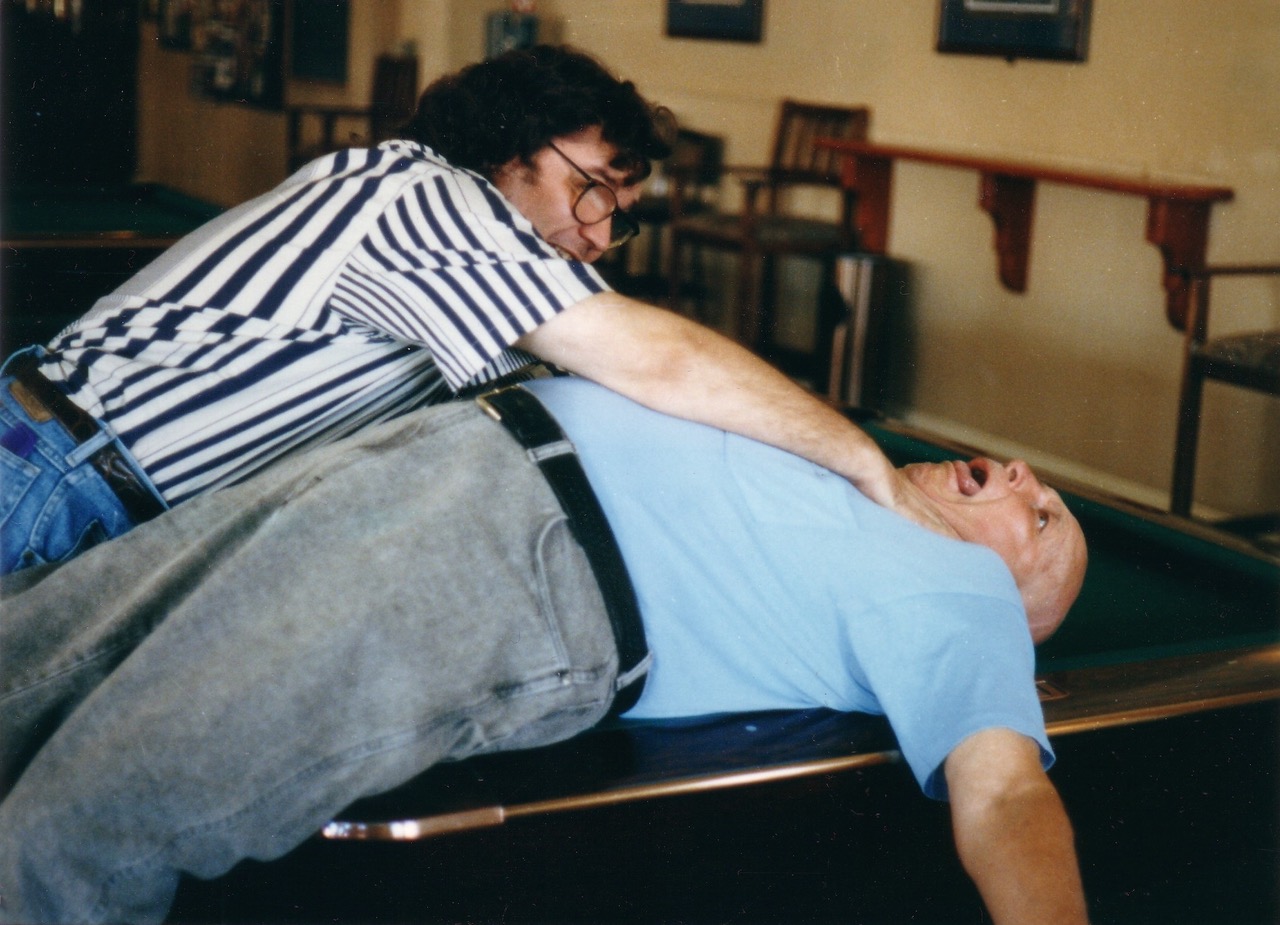
C. Courtney Joyner and Tierney at the Hollywood Athletic Club. (photo: Todd Mecklem)
“We ended up in his apartment, and he made us sandwiches,” Joyner remembers. “And of course, the place looked like a bomb had gone off, which I found out was Larry’s norm.”
“Stacks and stacks of newspapers from who knows how far back,” Huston says. “Looked like he’d lived there for twenty years, and he’d lived there for like three months.”
“It just started from there,” Joyner says, “and the old, ‘Listen kid, gimme your phone number, ’cause I’m gonna be calling you.’ And boy, did he ever.”
Huston adds: “Like they say in Devil Thumbs a Ride, they gave him a ride home and changed their lives forever.”
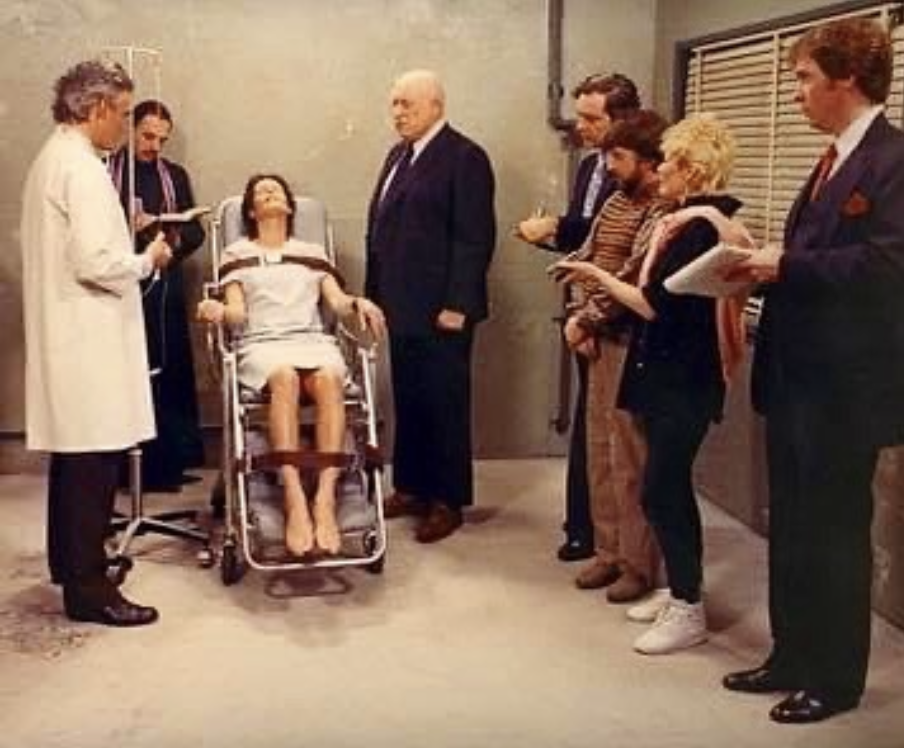
Tierney as the warden (& David Del Valle, 3rd from right) in From a Whisper to a Scream, 1987, directed by Jeff Burr, cowritten by C. Courtney Joyner.
The fortuitous meeting would also lead to a major change in Tierney’s life, career, and fortunes. For his young friends, though, it was a red flag. “Looking back on it now, it’s not really a laughing matter, because I guarantee you he was bipolar, either non-diagnosed or self-medicated,” Burr says. “I think that certainly fueled the manic ups and downs of his career and just a willful screwing up of real possibilities.
“And another thing, and he probably did it that night—he had a big thing about public urination. I mean, there’s twenty empty stalls five feet away, he would choose to open a door and urinate outside or on Hollywood Boulevard. This wasn’t when he was infirm. This was fifteen years earlier, when he was absolutely able to get around. It was a choice, just a blatant disregard for anything or anybody, authority-wise.”
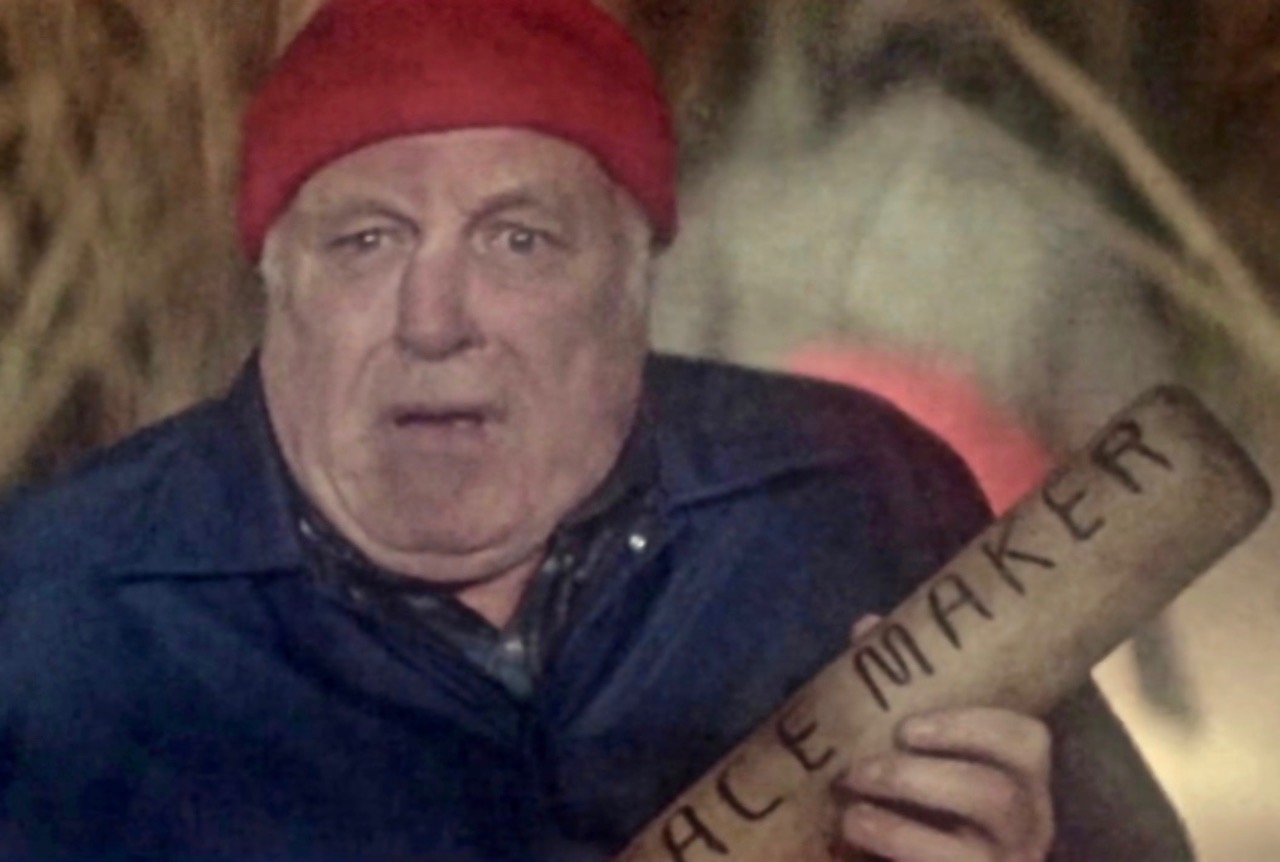
Lawrence Tierney in Stephen King’s Silver Bullet (1985)
Lawrence Tierney: Hollywood’s Real-Life Tough Guy is available online and in bookstores. Signed copies can be ordered from Hollywood’s Larry Edmunds Bookshop. More info on the book — and its Tierney double feature launch event — at LawrenceTierneyBook.com.
999
Burt Kearns is the author of three books. He also writes and produces nonfiction television and documentary films.


